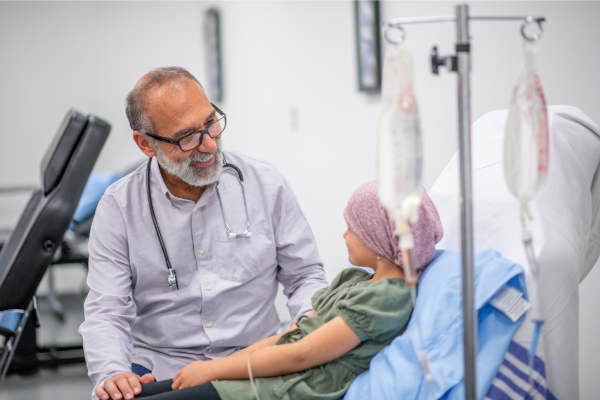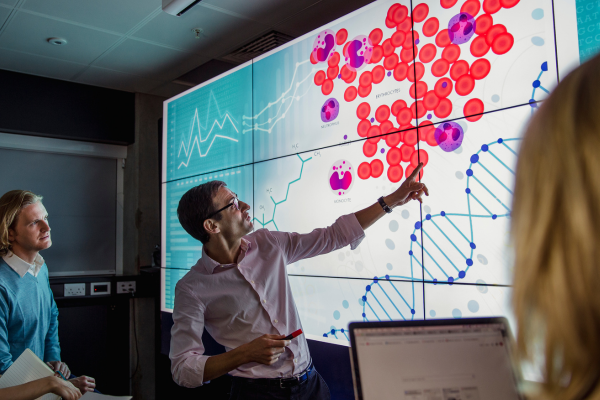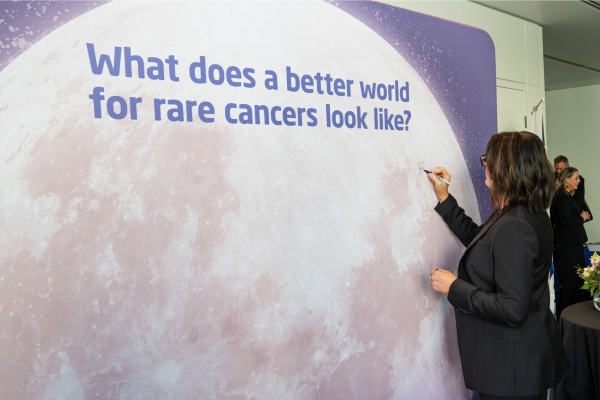The disparities facing people with rare and less common cancers have been recognised for over a decade. Despite improvements in overall cancer survival rates, the stark inequities faced by people with rare and less common cancers persist.
Here are some examples of common challenges faced by people living with rare and less common cancers:
Inequity in survival outcomes
Approximately 42,000 Australians are diagnosed with a rare or less common cancer each year. Some 17,000 people lose their lives – that’s 46 people every day. While about one quarter of cancer diagnoses in Australia are rare or less common, they cause a third of all cancer deaths.
Although five-year survival rates are improving, there is greater progress in common cancers, which now have an overall five-year survival rate of 77%, compared to just 45% for less common cancers and 62% for rare cancers.
Late diagnosis, unclear prognosis
No screening programs exist to detect rare cancers early, so they are often complicated by a late diagnosis – making the cancer more difficult to treat. It can also be very difficult for doctors to estimate a prognosis because there is so little data available to inform their judgement.
High out-of-pocket costs
Many patients are paying huge out of pocket costs for treatments that are not funded by the Government – sometimes tens of thousands of dollars. Some people are travelling overseas for treatments and are forced to crowdfund. Tragically, more patients are choosing to forgo treatment altogether rather than bankrupt their families for life-extending treatments.
Limited information
Typically, people living with rare cancer have gone without support resources tailored explicitly to their needs. Instead, they have had to rely on information designed for common cancers, or sometimes nothing at all. They often need to undertake extensive personal research to find the answers they need.
Less expert knowledge
There isn’t as much research to rely on as evidence is still being established, and there are fewer experts who specialise in rare cancers. This can make it difficult for doctors to quickly find everything they need to care for people with rare cancers.
Limited treatment options
Treatment planning is notoriously difficult. Compared to more common cancers, fewer clinical trials and limited data to support drug registration and reimbursement means rare and less common cancer patients are left with fewer proven treatment options and fewer subsidised medicines.
Delayed access to medications
The timeframe to get treatments to patients in Australia is lengthening. At present, it takes at least 14 months for a new drug to be approved and subsidised. This is of particular concern for cancer patients with advanced disease, who may only have a short time to live.
Limited rural and remote services
In rural and remote areas of Australia, some services may not be available at all. As most cancer treatment centres and experts are based in metro areas, many people living outside of major cities need to travel, often at significant expense, spending extended time away from their jobs, support systems and families.
Focus on common cancers
There has been rapid progress in treatment options and survival rates for common cancers thanks to increased screening, surveillance and improved treatments. At the same time, a consistently higher number of people with a rare, less common or complex cancers are dying from their disease.
We believe in a future where no person is disadvantaged because of the rarity of their cancer.



